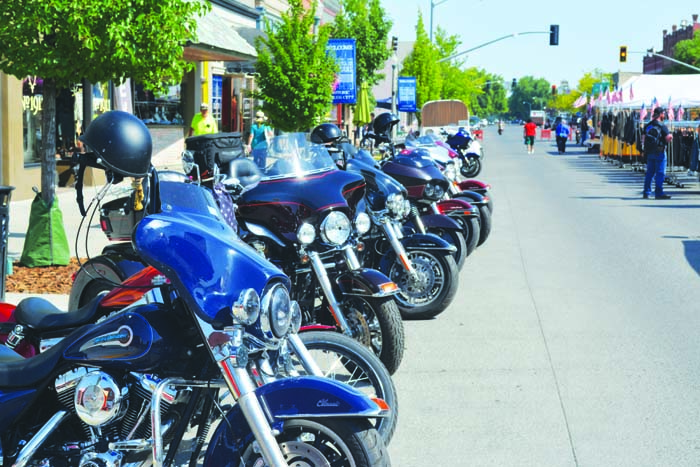Book reveals a man’s love for a mountain
Published 1:45 pm Friday, June 24, 2022
If Mount Adams were a Beatle it would be Ringo.
Despite being the third tallest of the great volcanoes that comprise the Cascade Mountains, this peak in Southern Washington garners much less attention than some that fall short both literally and, based on sheer bulk, figuratively.
The two summits that surpass Adams’ 12,276 feet, Mount Rainier, also in Washington, and Mount Shasta in Northern California, are understandably famous — the John and Paul of the Cascades, to belabor the musical analogy.
Rainier, the tallest of the Cascades at 14,410 feet, so dominates its section of the range, looming over the Puget Sound and the millions of people who live nearby, that its eminence, both physical and historical, is understandable.
So too with Shasta, the 14,162-foot sentinel visible from almost any slightly elevated vantage point for 100 miles around.
Yet Mount Hood, I feel confident in claiming, graces far more calendars and coffee table books than Adams, even though Hood is a thousand feet shorter.
Mount St. Helens is much shorter still — particularly since May 18, 1980 — but it, too, is far better known than Adams.
St. Helens, of course, gained much of its stature by the very thing that cleaved 1,300 feet from its summit — the cataclysmic 1980 eruption.
Adams, in addition to ranking third in elevation, outranks every peak in the Cascade in the volume of its eruptions save for Shasta.
Rainier is more than 2,000 feet taller but it was constructed atop nonvolcanic rocks, giving it, in effect, a boost that Adams lacks.
Although it can hardly be said that a 12,000-foot, glacier-mantled volcano is inconspicuous, Adams certainly doesn’t flaunt its massive ridges and icefields as blatantly as its aforementioned cousins.
This has quite a lot to do with its location.
The vantage points that most thoroughly reveal Adams’ grandeur are comparatively lightly populated — Hood River and The Dalles, for instance, and the Yakima Valley.
Mounts Hood and St. Helens, by contrast, show off for more than a million people in the Portland metro area whenever the clouds thin or disappear.
Rainier’s audience is larger still.
Yet all mountains, even ones that are mere hillocks compared with Adams, are the dominant natural feature for somebody, the sight that thrills them like no other.
Mount Adams fulfills that role for many people, I’m sure.
But I doubt any can exceed Darryl Lloyd’s claim, as it were.
I recently came across Lloyd’s fine 2018 book, “Ever Wild: A Lifetime on Mount Adams,” at the Baker County Library.
Although I don’t believe the word book necessarily fits Lloyd’s work.
Ode, I think, better captures the flavor of the thing.
Darryl, along with his twin brother, Darvel, born in 1942, grew up near Glenwood, Washington, a village at the southeast foot of Mount Adams.
Darryl Lloyd writes in the introduction that he and his twin took their first hike, at Bird Lake on the mountain’s slopes, when they were 2.
Four years later the brothers got lost together when they ventured away from a hiking trail.
“It would be the beginning of almost seven decades of off-trail ramblings by the Lloyd brothers on Mount Adams,” Darryl writes.
Quite a few of those rambles brought the Lloyds, or Darryl himself, to the summit of Adams. Despite its great elevation, the mountain, from its south side in particular, makes for a technically easy — though physically demanding — ascent.
“Ever Wild” is a history book, but not a typical one.
Since its chief character is tens of thousands of years old, the book necessarily covers a greater span than is usual. But although the mountain itself is always central, “Ever Wild” at its core is a story about people.
It’s a story about the Native Americans, whose relationship with Adams is centuries older than the white settlers’. The forests that circle the mountain gave the native peoples’ beargrass for their baskets and huckleberries for their larders and much else besides.
It’s also a story about the people who came later and sought to exploit some of the peak’s myriad other values.
Some of this was basically innocuous.
The U.S. Forest Service, for instance, recognized that Adams’ immense height afforded a vantage point for a fire lookout almost unrivaled — and one that, unlike its taller neighbor, Rainier, was actually accessible.
(Strings of packhorses frequently wended their way to the top of Adams, something that did not happen at Rainier or Hood and indicates the relative simplicity of the ascent.)
The Mount Adams lookout was built in 1920-21 — the construction season was, of course, a brief one, since “summer” is more a concept than a season at such an elevation — and was staffed for not much longer, until 1924.
Other users, though, endeavored instead to plunder the mountain, or its flanks, for valuable resources ranging from lush grass to pungent sulfur.
Lloyd writes at length about the hordes of sheep that grazed for many years around the mountain, denuding its meadows and forests of grass, and leaving scars that persist more than a century later.
But it’s a much less common sort of extraction that makes for one of the more compelling chapters in the history of Mount Adams.
Lloyd describes how, from 1931-37, the peak’s summit crater drew miners who hoped to profit from the buried deposits of sulfur and sulfate minerals.
Miners, of course, are known for wielding their picks in precarious places. But the top of a 12,000-foot peak is an uncommon spot for digging even among fearless argonauts.
The Mount Adams mining operation never amounted to a great deal. Fortunately, neither did it significantly mar the summit area, much of which is covered with an ice cap.
Lloyd’s book not only entertained me, with its fascinating stories and wondrous photographs, but it also inspired me.
I’ve seen Mount Adams dozens of times, mostly while in The Dalles or Hood River, but one memorable time from about 150 miles away, at Elkhorn Summit near Anthony Lakes where its white cone jutted just above the horizon, defying the distance and the summer haze.
But I’ve never hiked a trail on its flanks, or stained my hands purple with its huckleberries, or made a bid, legs aching and lungs straining, for its summit.
Thanks to Darryl Lloyd, who dared share with the public his great love for Mount Adams, I feel a strong compulsion to fill these blanks in my outdoor resumé, to set my boots on its lava flows and glaciers and perhaps understand, in a small way, how one mountain came to mean so much to one man.







